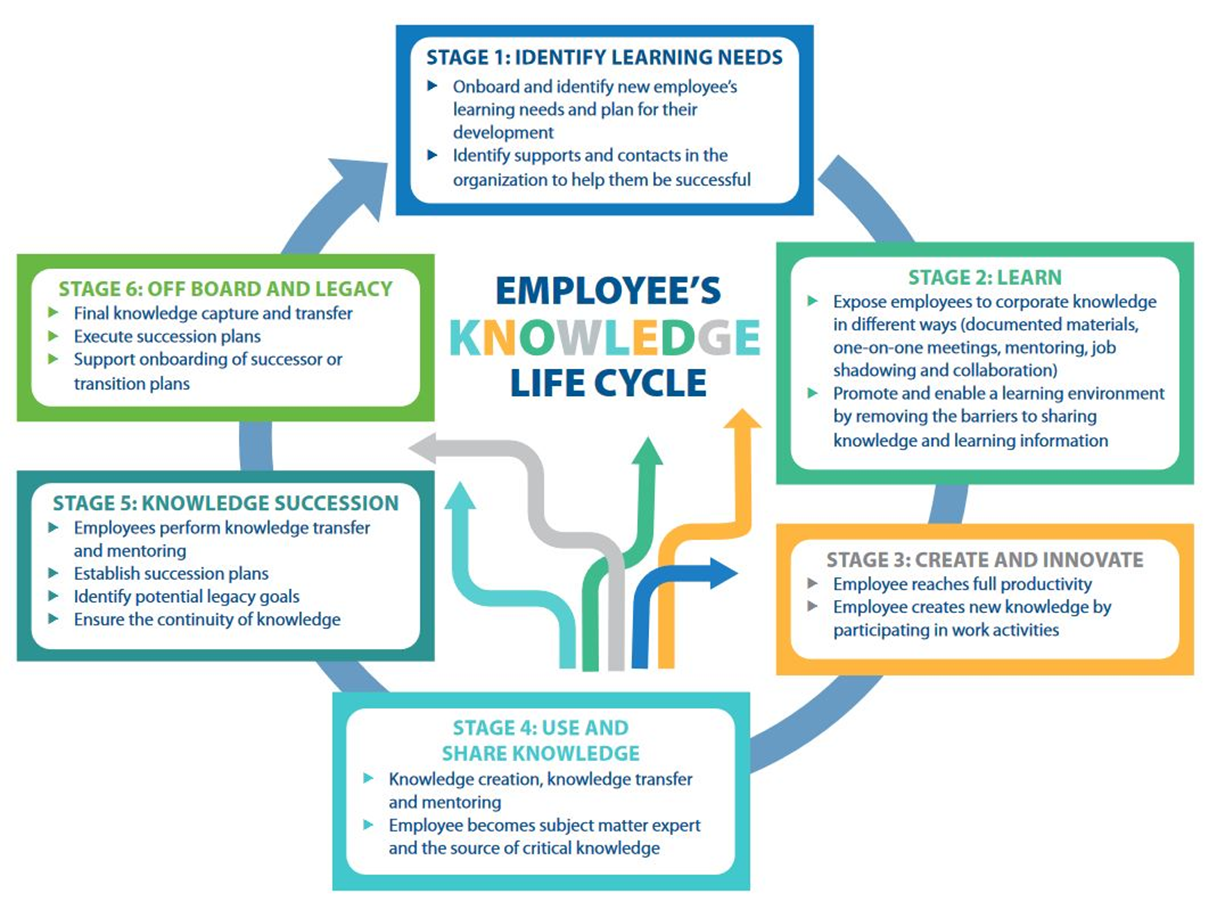Knowledge transfer lifecycle
Knowledge transfer can happen across ministries, among teams within ministries, or among members within a team.
When approaching knowledge transfer in any of these situations, it's helpful to consider an employee's lifecycle stage, outlined in the diagram below.
Knowing where you and your team members lie in your individual knowledge lifecycles will help everyone get the right support for knowledge transfer.
Stage 1: Identify learning needs
- Onboard and identify new employee’s learning needs and plan for their development
- Identify supports and contacts in the organization to help them be successful
Stage 2: Learn
- Expose employees to corporate knowledge in different ways (documented materials, one-on-one meetings, mentoring, job shadowing, and collaboration)
- Promote and enable a learning environment by removing the barriers to sharing knowledge and learning information
Stage 3: Create and innovate
- Employee reaches full productivity
- Employee creates new knowledge by participating in work activities
Stage 4: Use and share knowledge
- Knowledge creation, knowledge transfer, and mentoring
- Employee becomes subject matter expert and the source of critical knowledge
Stage 5: Knowledge succession
- Employees perform knowledge transfer and mentoring
- Establish succession plans
- Identify potential legacy goals
- Ensure the continuity of knowledge
Stage 6: Off board and legacy
- Final knowledge capture and transfer
- Execute succession plans
- Support onboarding of successor or transition plans
Related resources
Key terms
Useful contacts
Employees with a valid government IDIR can submit an AskMyHR service request to connect to the corporate workforce strategies team.
To submit a service request, select Myself > Career Development > Knowledge Transfer.
If you don’t have an IDIR, please contact the BC Public Service Agency.

